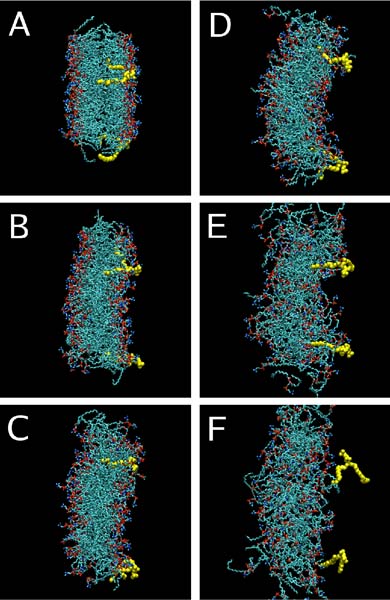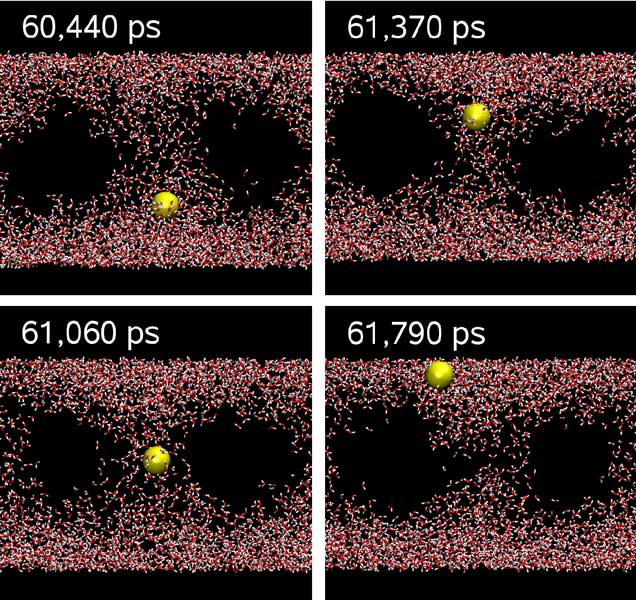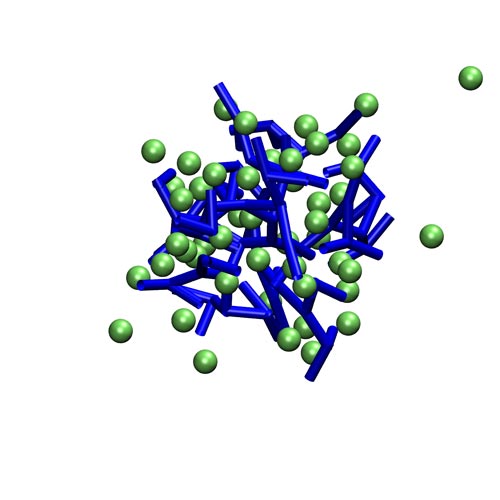Home> Image Gallery> Page 3 of 4
Pore formation in the bilayer system with 10 mol % of DMSO. Water is shown in red, DMSO in cyan, choline and phosphate groups of lipid headgroups in green and yellow, respectively. Lipid acyl chains are not shown. |
|
Desorption of lipid molecules from a membrane under the influence of 30 mol % of DMSO: (A) 0 ps, (B) 2280 ps, (C) 3030 ps, (D) 3400 ps, (E) 4500 ps, and (F) 9490 ps. Extracted lipids are highlighted in yellow; water and DMSO are not shown. |
|
Permeation of a potassium ion (shown in yellow) through a transient water pore induced by the addition of 10 mol % of DMSO to a DPPC bilayer system. Water is shown in red and white; lipids, DMSO, and K and Cl ions are not shown. |
|
Distinct modes of action of DMSO on phospholipid membranes. Presented are side views of the final structures for the bilayer systems containing 0, 5, 10, and 40 mol % of DMSO (lipid-free basis). Lipids are shown in cyan, water in red, and DMSO in yellow. |
|
Typical configurations of charged dendrimers (shown in blue) at moderate (top) and strong (bottom) electrostatic interactions in the system. Counterions are shown as green spheres; the solvent is omitted for clarity. |







